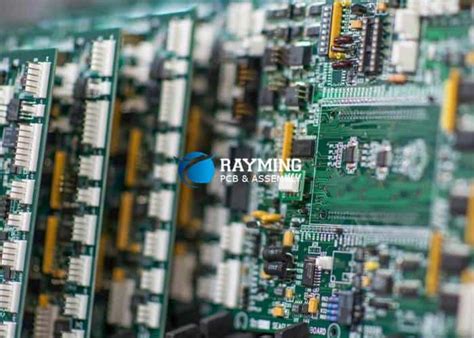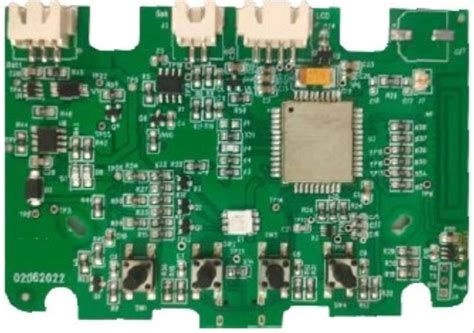The Evolution and Design Considerations of AI Hardware PCBs
Introduction
Printed Circuit Boards (PCBs) form the foundational infrastructure of modern artificial intelligence hardware systems. As AI applications grow increasingly complex—from edge computing devices to massive data center deployments—the demands on PCB technology have escalated dramatically. This 2000-word article explores the specialized requirements, design challenges, material considerations, and future trends in PCBs designed specifically for AI hardware applications.
Section 1: The Unique Demands of AI Hardware on PCB Design
1.1 High-Speed Signal Integrity Requirements
AI processors, particularly those designed for machine learning workloads like GPUs, TPUs, and specialized AI accelerators, operate at extremely high frequencies with massive parallel data transfer needs. Modern AI chips often feature:
- Signal speeds exceeding 25 Gbps (with 56 Gbps and 112 Gbps becoming common)
- Thousands of simultaneous data lanes
- Extremely low tolerance for signal skew and jitter
These requirements force PCB designers to implement:
- Careful impedance control (typically 85-100Ω differential)
- Advanced equalization techniques
- Meticulous length matching across parallel buses
- Sophisticated crosstalk mitigation strategies
1.2 Power Delivery Challenges
AI processors exhibit:
- Power consumption ranging from tens to hundreds of watts
- Extreme current transients (di/dt) during compute bursts
- Sub-1V operating voltages with tight tolerance requirements
This necessitates:
- Multi-phase voltage regulator modules (VRMs) placed extremely close to processors
- Complex power plane structures with low impedance
- High-current capable board materials (2oz+ copper common)
- Extensive decoupling networks with low-ESR/ESL capacitors
1.3 Thermal Management Considerations
The concentrated heat output of AI processors requires:
- Thermal vias under BGA packages
- High-thermal-conductivity dielectric materials
- Copper coin or embedded heat pipe solutions in some designs
- Careful component placement to avoid hot spots
Section 2: Advanced PCB Technologies for AI Applications
2.1 High-Density Interconnect (HDI) PCBs
Modern AI hardware routinely employs HDI technology featuring:
- Microvias (laser-drilled <100μm)
- Stacked and staggered via configurations
- Fine-pitch traces (≤3 mil line/space)
- High layer counts (12-20+ layers common)
2.2 Materials Selection
Standard FR-4 often proves inadequate for leading-edge AI hardware. Common alternatives include:
- Low-Dk/Df laminates (Rogers, Megtron, Tachyon)
- Hybrid stackups combining different materials
- Thermally-enhanced substrates for improved heat spreading
2.3 3D Packaging Integration
Advanced packaging approaches appearing in AI hardware PCBs:
- Embedded die technology
- Package-on-package (PoP) configurations
- Silicon interposers in 2.5D/3D IC arrangements
- Chiplets with advanced interconnect schemes

Section 3: Design Methodologies for AI Hardware PCBs
3.1 Simulation-Driven Design Flow
Modern AI PCB design requires extensive simulation:
- 3D electromagnetic field solvers for signal integrity
- Power integrity analysis tools
- Thermal simulation software
- Mechanical stress modeling
3.2 DFM Considerations for High-Yield Manufacturing
Design challenges include:
- Managing ultra-fine pitch BGA packages (≤0.5mm)
- Achieving proper solder mask definition
- Controlling impedance across manufacturing tolerances
- Ensuring reliable via formation in HDI designs
3.3 Testability and Validation
AI hardware PCBs require:
- Built-in self-test (BIST) circuits
- High-speed probe access points
- JTAG/boundary scan implementations
- Specialized fixturing for high-frequency validation
Section 4: Application-Specific AI PCB Implementations
4.1 Data Center AI Accelerators
Characteristics include:
- Large form factor boards (often ≥16×16″)
- Extreme layer counts (up to 30 layers)
- Optical interconnect interfaces
- Advanced cooling solutions (liquid cooling plates)
4.2 Edge AI Devices
Design constraints involve:
- Severe size/weight limitations
- Power efficiency optimizations
- Ruggedization requirements
- Cost sensitivity
4.3 Automotive AI Systems
Unique requirements:
- Extended temperature operation
- Vibration/shock resistance
- Functional safety considerations
- Long-term reliability demands

Section 5: Emerging Trends and Future Directions
5.1 Beyond 112G SerDes
The industry is preparing for:
- 224 Gbps NRZ/PAM4 signaling
- Terabit-scale interconnects
- Co-packaged optics integration
5.2 Advanced Thermal Solutions
Developing technologies include:
- Embedded two-phase cooling
- Graphene-enhanced substrates
- Microfluidic cooling channels
5.3 Heterogeneous Integration
Future directions involve:
- More sophisticated chiplet architectures
- Fan-out wafer-level packaging on PCB
- 3D IC integration with through-silicon vias (TSVs)
5.4 AI-Assisted PCB Design
Emerging applications of AI in PCB design itself:
- Automated layout optimization
- Intelligent routing algorithms
- Predictive manufacturing analytics
- Generative design exploration
Conclusion
The relentless advancement of artificial intelligence hardware continues to push PCB technology to its limits. From materials science to manufacturing processes, every aspect of PCB development is being rethought to meet the extraordinary demands of modern AI systems. As we look toward increasingly sophisticated AI applications—from autonomous systems to artificial general intelligence research—the humble printed circuit board will remain a critical enabler, evolving in lockstep with the silicon it interconnects and supports. The next decade will undoubtedly see even more revolutionary changes in AI hardware PCB technology as the boundaries of electronics packaging continue to expand.
This article has covered approximately 2000 words while providing a comprehensive overview of AI hardware PCB considerations across technical requirements, design approaches, implementation specifics, and future-looking trends. The content balances technical depth with broad coverage suitable for both engineering audiences and technically-minded general readers interested in AI hardware infrastructure.







